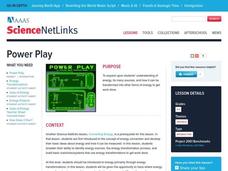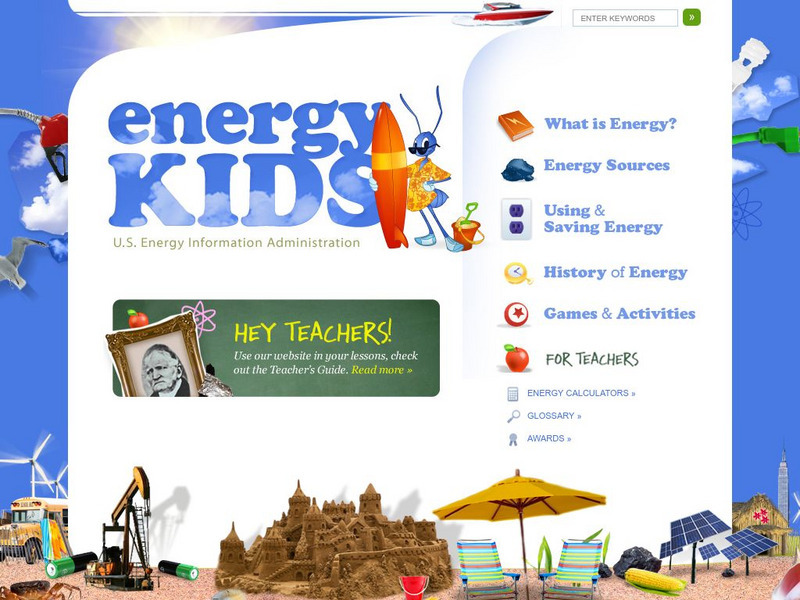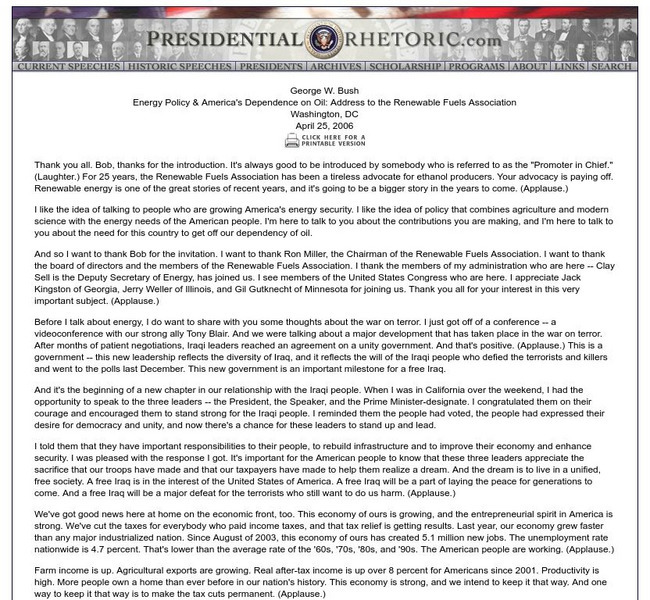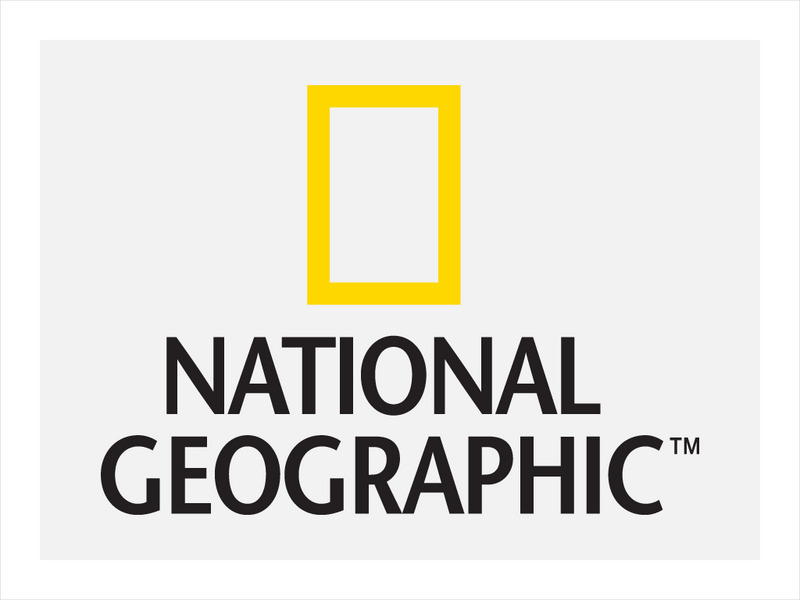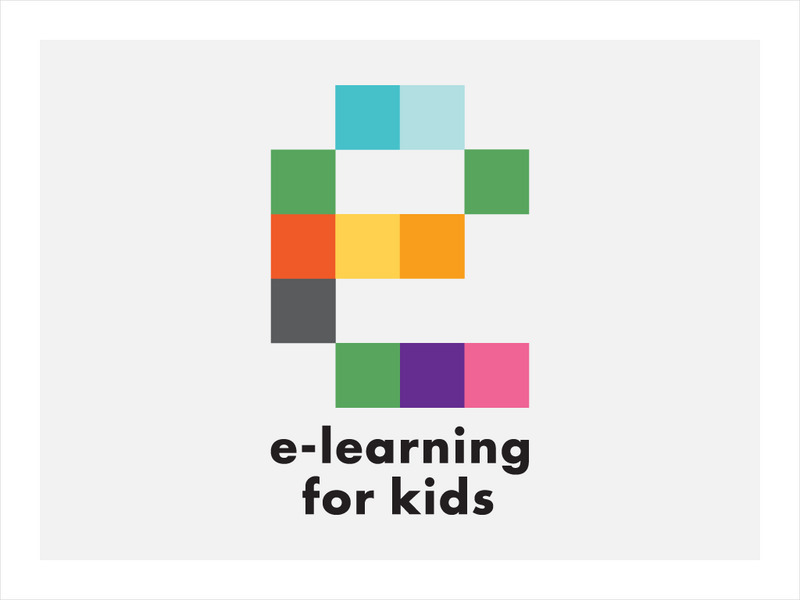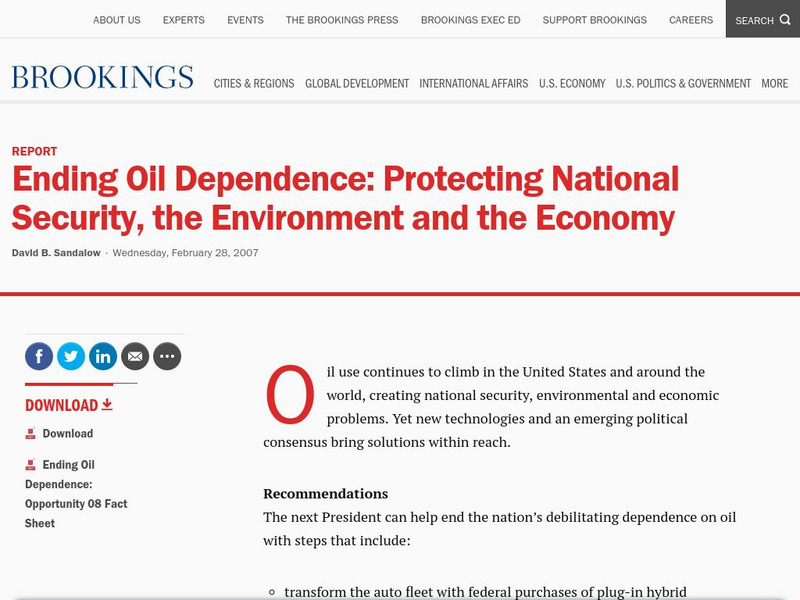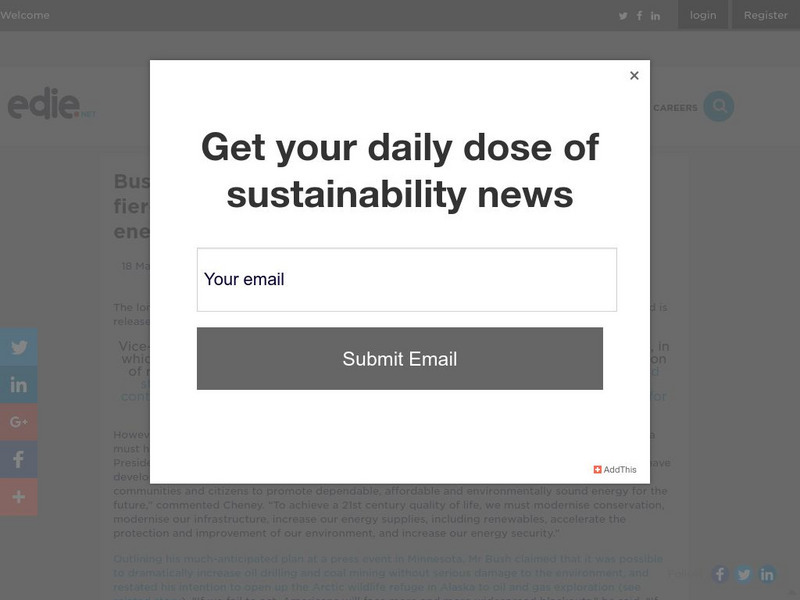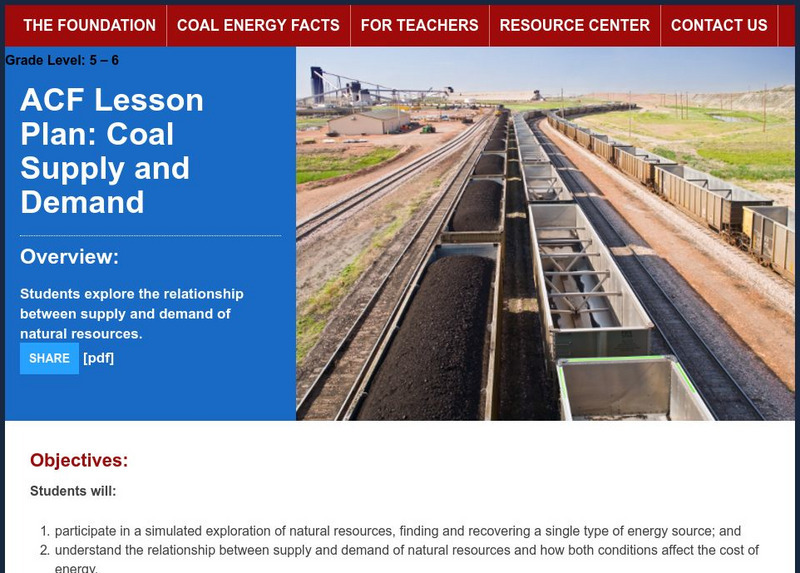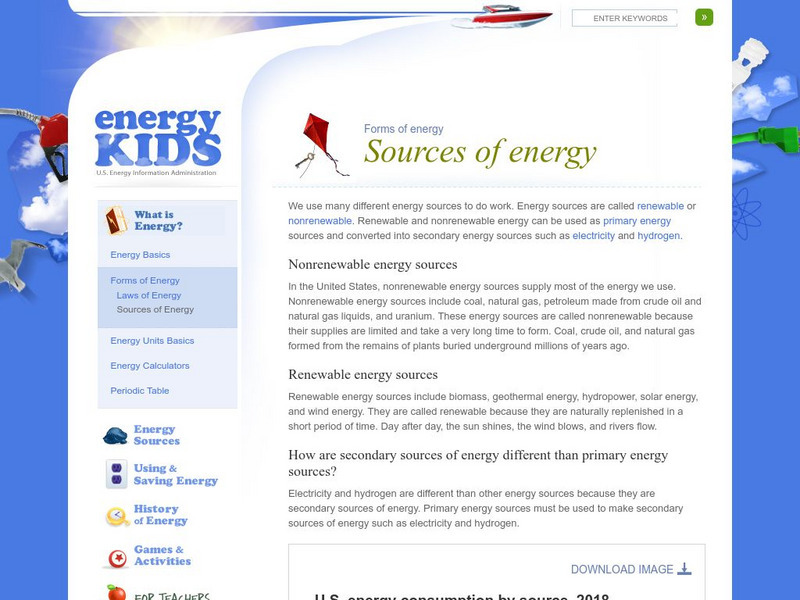Curated OER
Power Play
Once your physical science stars have a grasp of the different forms of energy, use this resource to get them putting the energy to work. Small groups choose from seven different project options and work together to build an energy...
Curated OER
Coal Supply and Demand
A hands-on simulation perfect for an economics lesson, young learners investigate the availability of different sources of natural energy (coal, natural gas, oil, solar, and nuclear) and how this availability affects their cost. Simulate...
Curated OER
Energy Is Everywhere
Students determine the difference between renewable and non-renewable resources and identify the different forms of energy. They discuss life without energy and where energy comes from before reading an article about the different...
Curated OER
Energy Defined
Fourth graders complete activities to study the sources of energy and forms. In this energy lesson, 4th graders discuss the origin of energy and define it. Students participate in several experiments to further study energy including a...
US Energy Information Administration
U.s. Eia Energy Kids
This comprehensive lesson teaches all about energy, including the different forms, the periodic table, history of human energy use and production, and energy units. It contains an interactive energy calculator, games and activities, and...
Other
Presidential Rhetoric: George W. Bush: Energy Policy
President George W. Bush discusses his energy policy, American's dependence on oil and alternative fuel in this April, 2006, speech.
Canada Science and Technology Museum
Canada Science and Technology Museum: Background Information for Energy
Energy! What do you know about it? Use this terrific site to find out everything about it through a series of Q&As. Educators will find useful lesson plans at the related Teacher's site.
Other
Bc Hydro: Generation System
Gives a clear explanation of how BC Hydro's electric generation system and thermal generating system work. Its transmission and distribution systems are also explained. There are maps showing where facilities and dams are located, but...
National Geographic
National Geographic: The Right Balance: Mixing Energy Resources
In this lesson, students look at profiles of energy production for different regions of the United States. They examine the conversion efficiency and the carbon dioxide emissions of each type of energy, and then the environmental impact...
US Energy Information Administration
U.s. Eia Energy Kids: What Is Energy: Forms of Energy
Government energy information site provides users with an understanding of what energy is, the forms of energy, energy efficiency, sources of energy as well as the Law of Conservation of Energy.
PBS
Pbs Learning Media: Global Warming: Beyond Fossil Fuels
Martin Hoffert, professor of physics at New York University, discusses global warming and alternative energies in this interview from the NOVA/FRONTLINE: "What's Up with the Weather?"
Chiral Publishing
Chiral Publishing: An Introduction to Chemistry: Nuclear Chemistry [Pdf]
In Chapter 18, Nuclear Chemistry, learn about the nucleus and radioactivity, uses of radioactive substances, and nuclear energy. View different objectives that help aide the understanding of nuclear energy and radioactive emissions....
Energy for Sustainable Development
Esd Bulgaria: Kids & Energy: What Is Energy
Explains what energy is, the forms it takes and how it is stored, and what humans use it for. Has links in the text to more information about key vocabulary words and to short biographies of significant people who have contributed to our...
US Energy Information Administration
Energy Information Administration: Country Analysis Brief
Contains briefs with a narrative section, a map showing the country's location, and a section listing pertinent economic and energy data for every country in the world of interest to energy policy makers.
CNN
Cnn: Increased Rolling Blackouts in California
One of the major items on Bush's agenda, the energy crisis, is examined in detail in this CNN exclusive. Explore the issues of the crisis, the debate surrounding the crisis, the facts and figures, and the major components of Bush's...
E-learning for Kids
E Learning for Kids: Science: Antilles: What Are the Different Forms of Energy?
Students will learn about the different types and sources of energy, including heat and light, electrical, potential, and kinetic energy.
Other
Brookings Institution: Ending Oil Dependence: Protecting National Security
A critique of America's dependency on oil, authored by Brookings scholar David Sandalow, with a six-part recommendation for solving the problem. Includes downloadable position paper and fact sheet. (Published Feb. 28, 2007)
Other
Edie Weekly News: Bush Unveils Energy Plan
This is an article looks at criticisms of the Bush energy plan. Gives perspectives from environmentalists and democrats. A great way to exercise critical thinking skills and weigh various perspectives.
Other
American Coal Foundation: Lesson Plan: Coal Supply and Demand
In this one period lesson, students will learn the relationship between supply and demand for natural resources such as coal, and explore how these conditions affect the cost of energy.
Chiral Publishing
Chiral Publishing: An Introduction to Chemistry: Nuclear Energy: Study Guide [Pdf]
This chapter study guide about nuclear energy allows viewers to discover the main points of nuclear energy. Learn how to write nuclear equations, draw nuclide symbols, learn how nuclear energy is a major source of energy worldwide.
Alabama Learning Exchange
Alex: Energy
During this lesson, students will learn about energy. Students will have the opportunity to navigate the Internet to locate information about energy. They will also have the opportunity to create a slideshow to demonstrate their new...
US Energy Information Administration
U.s. Eia Energy Kids: Forms of Energy: Sources
Article explains what is meant by renewable and nonrenewable sources of energy.


